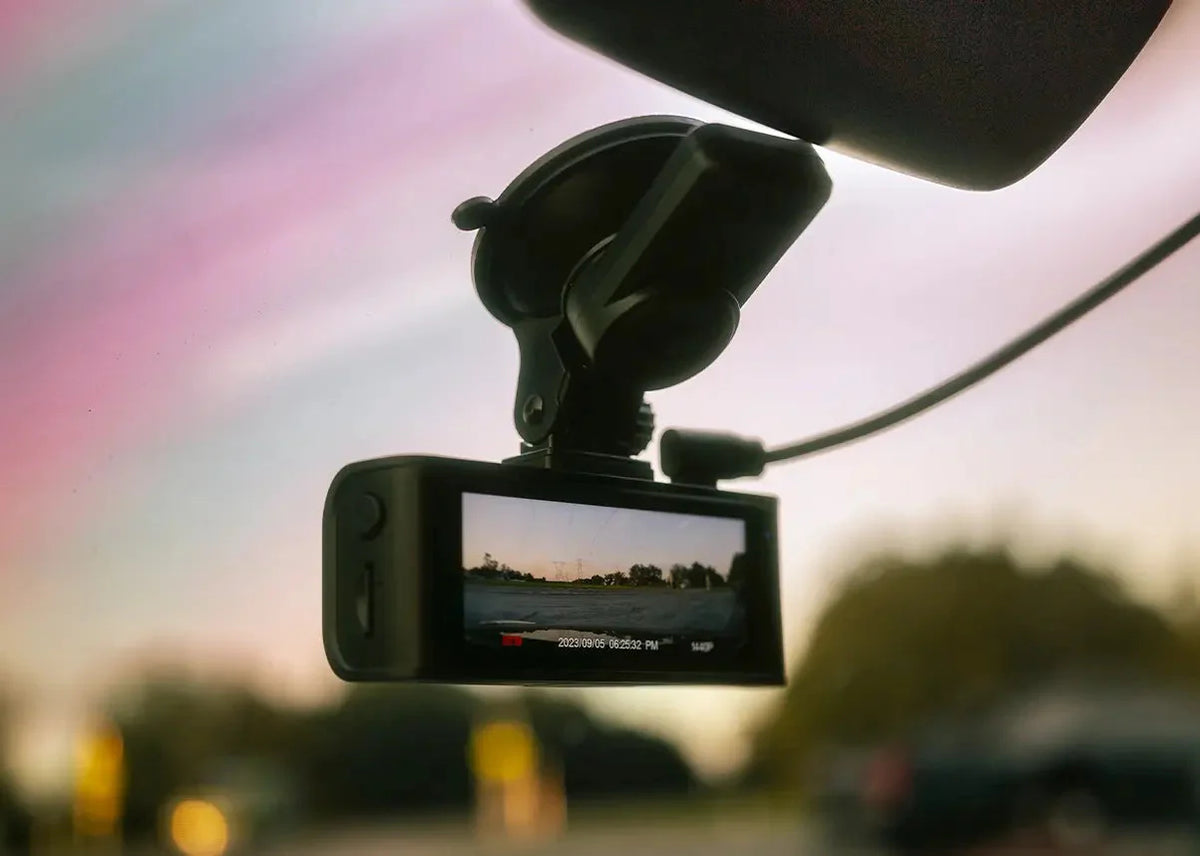

Many drivers now consider themselves fortunate enough to own a dash cam because they provide security and assurance that the camera will capture any incident that may occur. A dash cam can come in handy whether it is necessary to record an accident or use it as evidence in case of disagreements. So what is the mechanism of the dash cams?
In this article, we’ll break down how dash cams work, their models, storage, legal implications, and much more to help you understand their full potential.
What is a Dash Cam?
A dash cam is a small camera mounted on your car that constantly records what you see through your car windshield (and sometimes the cabin as well). Dash cams come in different varieties, and so can be selected depending on your requirements.
1. Single Dash Cams:
Single dash cams record the footage from the front of the car.
2. Dual Dash Cams:
Dual dash cams capture both front and rear views, providing a more comprehensive recording.
3. Cabin Dash Cams:
Cabin dash cams are oriented on the inside of the vehicle and are excellent when used by rideshare drivers.
4. 3-Channel Dash Cams:
3-channel dash cams provide front, rear, and cabin coverage, which means they are perfect when total surveillance is needed.
The main objective of a dash cam is to capture video footage of high quality (usually in high definition), which can be used as evidence in case of accidents or disagreements.
How Do Dash Cams Work?
Once you install a dash cam in your car, it will automatically record when the car starts. The camera operates continuously, recording in loops, and overwrites the older footage when the memory card gets full. Here is how the process works in detail:
1. Power Source:
The power of most dash cams is supplied either via the car cigarette lighter socket or directly by connecting to the fuse box. This enables them to begin recording automatically once the car is switched on.
2. Recording Process:
The dash cams are equipped with sensors such as the G-sensors, which can sense accidents. Once a collision is detected, the footage recorded will be locked by the camera to avoid it being overwritten, ensuring that critical moments will not be lost.
3. Storage:
A dash cam records the video to a memory card, typically an SD card, which can be easily removed. Footage is normally stored in small files, about 1-3 minute clips and that makes it easy to organize data and avoid file corruption.
4. Day-to-Day Operation:
Most modern dash cams operate automatically, requiring no user action. Once the car is powered on, the dash cam begins recording, and it will record until the car is switched off.
Is a Dash Cam Worth It?
You may ask yourself, do I really need a dash cam? Is a Dash Cam Worth It? The short answer is yes, particularly when you are seeking accident documentation, insurance cover, and peace of mind.
Benefits of a Dash Cam:
Here are some benefits of having a dash cam in your car:
1. Accident Documentation:
In the case of an accident, dash cams record your video evidence that can be used to prove fault and possibly protect you against wrongful claims.
2. Insurance Protection:
Your insurance costs may also be reduced in the presence of a dash cam, because it serves as proof beyond doubt that can defend you against false claims.
3. Peace of Mind:
Being aware that you are recorded all the time in the streets can keep you safer, particularly in unknown territories, as well as long-trip routes.
Are Dash Cams Legal?
The legal aspects should be considered before you proceed and purchase a dash cam. Laws about dash cams differ across the country, yet there are several common things that should be considered:
1. Placement:
Make sure that your dash cam does not block your view of the road. It is against the law in certain regions to install a camera in a position that will obstruct your line of sight.
2. Audio Recording:
There are certain areas where audio recording is strictly illegal. In case your dash cam records audio, be knowledgeable of the local law.
3. Data Privacy:
If you share dash cam footage, make sure that you are not violating anyone’s privacy by including personal moments in the video.
Make sure to check local laws so that you do not get in trouble with any legal issues related to the usage of your dash cam.
How Dash Cams Record and Store Footage
A major question asked frequently about dash cams is how do they record and store video? The process is explained as follows:
1. Where Is Dash Cam Footage Stored?
Dash cams generally have a micro SD card that can hold up to 128Gb or more of footage, depending on the model of the camera. The video is stored in looped video segments, and when the card becomes full then the previous oldest video is overwritten by the new videos.
2. How Long Can a Dash Cam Record?
The duration that it takes to record is based on the memory card size, video resolution, and the frequency at which it is being recorded. A 16GB card normally holds about 2-3 hours of footage, whereas a 64GB card will record approximately 10 hours.
3. Do Dash Cams Record All the Time?
Yes, most of the modern dash cams record continuously when the car is on. Some models also have motion detection, meaning that the camera only records when it detects motion.
4. What Happens to Dash Cam Footage After an Accident?
In case of any accident, the G-sensor installed in the dash cam will lock the video, hence avoiding the recording from being overwritten. This will make sure that important footage involving the accident is saved.
Power Supply and Battery Impact
Dash cams are usually connected to your car via its electrical system, but some come with an internal battery that enables them to record even when your vehicle is off. The following is what you need to know:
1. Do Dash Cams Always Have to Be Plugged in?
No, there are some dash cams with internal batteries allowing them to record for short periods without being connected to the car's power system. But most dash cams need to be plugged into a power source to record continuously.
2. Do Dash Cams Drain Car Batteries?
Most dash cams use minimal power, and hence they will not cause significant depletion of your car battery. But if you're concerned about battery drain, then consider buying a dash cam with the parking mode so that it uses fewer resources when the car is off.
Where Not to Put Dash Cam?
The dash cam must be installed correctly in terms of security and compliance with the law. The following are some of the common mistakes to avoid:
1. Obstructing your view:
Never mount the camera in front of your windshield wipers or in areas that could obstruct your line of vision.
2. Placing near airbags:
Do not install your dash cam close to airbags or any other safety features. You may optimize your dash cam performance by positioning it in such a way that it looks directly on the road without any obstructions.
Conclusion
Dash cams offer more than recording accidents. They can bring increased safety and reassurance to your life. As a commuter or a long-distance driver, learning how they work and selecting the appropriate model makes them a smart investment. Explore models such as Redtiger Dash Cams for reliable, affordable options.
FAQs:
Do Dash Cams Record at Night?
Yes, most dash cams come with night vision so you can record a clear image even at night.
Is It Safe to Leave a Dash Cam in a Car Overnight?
Yes, it is safe. All you have to do is ensure that the dash cam is installed accordingly and does not interfere with your visibility.
Do Dash Cams Record Audio?
There are dash cams that also record audio, just pay attention to local regulations for audio recording.
Does a Dash Cam Lower Your Insurance?
Insurance companies can reimburse the drivers who use dash cams because they are less likely to create fraud and controversies.

